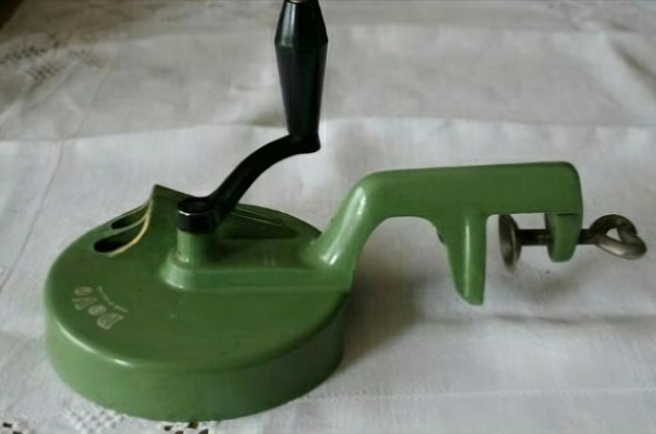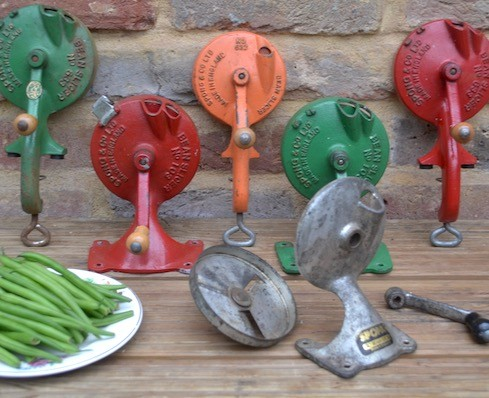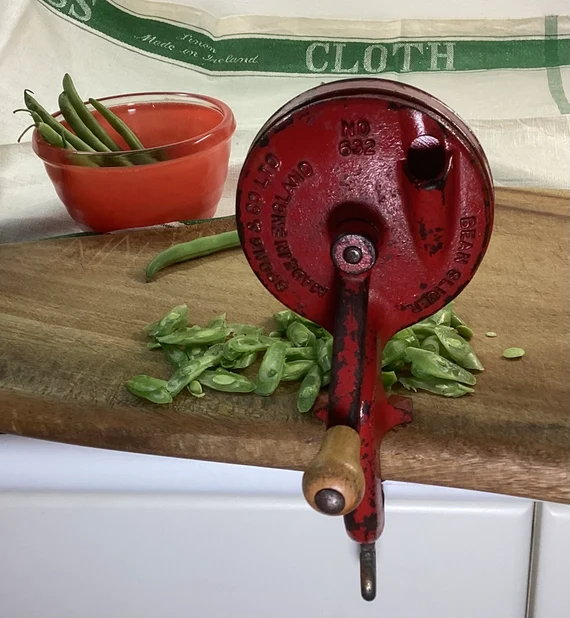When it comes to efficient kitchen tools, bean slicers are the unsung heroes of meal prep. Whether you’re slicing green beans for a quick stir-fry or processing a bumper crop of runner beans for freezing, these handy devices save time and effort while ensuring consistent, uniform cuts. Let’s dive into the fascinating world of bean slicers, exploring their types, uses, history, and why every kitchen needs one.
What Are Bean Slicers?

Bean slicers are specialized kitchen tools designed to transform beans into thin, uniform slices. Perfect for home cooks and preservation enthusiasts, these tools simplify the process of slicing beans into manageable pieces for cooking or storage. From traditional manual slicers to modern electric models, there’s a bean slicer for every need.
Types of Bean Slicers
Not all bean slicers are created equal. Over the years, they’ve evolved to suit different kitchen preferences and workloads. Here’s a closer look at the most common types:
Manual Block Slicers
Manual block slicers are simple yet effective. They consist of a block with wires strung across an open area. To use, you press and pull the beans through the wires, creating long, even slices.
- Advantages: Compact, lightweight, and easy to store.
- Best For: Occasional use and smaller quantities.
Hand-Cranked Slicers
Hand-cranked slicers are a step up in efficiency. These models feature a hopper where you feed the beans, and a crank that you turn to slice them. Some high-end models can handle multiple beans at once and even remove the strings simultaneously.
- Advantages: Faster than manual slicers and ideal for large batches.
- Popular Brands: Spong and Co., renowned for their durable and reliable designs.
- Design Features: Older models clamp onto tables, while newer versions often have rubber suction cups for added stability.
Electric Bean Slicers
Modern electric kitchen appliances sometimes include bean-slicing attachments. Brands like Kenwood once offered optional accessories specifically for slicing beans.
- Advantages: Minimal effort required and highly efficient for bulk processing.
- Best For: Busy kitchens or commercial use.
How to Use a Bean Slicer Effectively
Using a bean slicer is straightforward, but a few tips can make the process smoother:

- Prepare Your Beans: For runner beans, pare off the stringy sides with a knife before slicing. This ensures a smoother slicing process and better results.
- Position the Slicer: If using a hand-cranked model, place a plate or bowl beneath the slicer to catch the slices as they come out.
- Work in Batches: Hand-cranked models can handle several beans at once, so group them for quicker processing.
- Clean Regularly: After each use, clean the slicer to prevent residue buildup and maintain its efficiency.
Cooking and Preservation Benefits
Bean slicers aren’t just for convenience—they’re essential for preserving and preparing beans effectively.
- Perfect Slices for Cooking: Uniform slices cook evenly, making them ideal for dishes like stir-fries, casseroles, and soups.
- Preservation Made Easy: For those processing large quantities of beans, slicers make prepping for freezing, canning, or salting a breeze. The speed and consistency they offer are invaluable when dealing with seasonal harvests.
A Brief History of Bean Slicers
The bean slicer has a surprisingly rich history that dates back to the 1860s. Early models, such as the Batkins bean slicer, were among the first patented designs. However, it was James Osborn Spong of Spong & Co. who truly revolutionized the market.
Spong’s bean slicers became iconic, blending practicality with durability. His company supplied household utensils to the royal family and affluent homes, cementing its reputation as a leader in kitchen innovation. Today, vintage Spong models are collector’s items, celebrated for their timeless design and craftsmanship.
Why You Need a Bean Slicer in Your Kitchen
Still on the fence about investing in a bean slicer? Here’s why it’s a must-have tool:
- Efficiency: Whether you’re slicing beans for a family dinner or preserving a seasonal haul, bean slicers cut down prep time significantly.
- Versatility: With options ranging from manual to electric, there’s a slicer to suit every kitchen setup and workload.
- Quality Results: The consistent slices they produce ensure even cooking and better presentation.

Choosing the Right Bean Slicer for You
Selecting the right bean slicer depends on your needs and preferences:
- Occasional Use: Opt for a manual block slicer. It’s compact, easy to use, and perfect for small batches.
- Large Quantities: A hand-cranked model is your best bet. Look for features like multi-bean capacity and string removal for added convenience.
- Hands-Free Operation: If you frequently process beans in bulk, consider an electric slicer or a kitchen appliance with a bean-slicing attachment.
The Legacy of Bean Slicers
From their humble beginnings in the 1860s to modern kitchen staples, bean slicers have stood the test of time. They symbolize innovation and practicality, proving that even the simplest tools can transform how we approach food preparation. Whether you’re a home cook, a gardening enthusiast, or someone who values efficiency, a bean slicer is an investment that pays off with every slice.
Conclusion
Bean slicers are more than just tools—they’re time-saving marvels that enhance your kitchen experience. From manual block slicers to advanced electric models, these devices cater to every need, making bean preparation quick, easy, and precise. Rooted in a rich history of innovation, bean slicers continue to be an essential part of home kitchens and culinary traditions worldwide. So why not add one to your kitchen arsenal and experience the difference for yourself?


